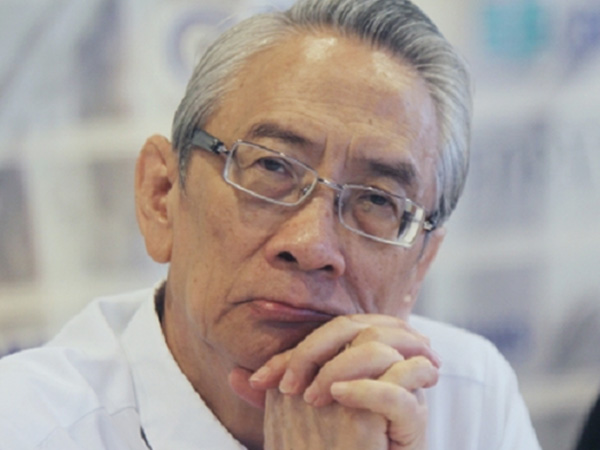Archbishop Emeritus Oscar Cruz called on the public to refrain from using ivory tusks for religious images.
Cruz said the use of ivory tusks for religious images should be stopped “because it is contrary to the signs of the times.”
“Elephants are already endangered and that reason itself dictates that we get rid of ivory. There are better materials like kamagong, iron, wood, molave. Besides, the moment you have ivory in an image, you’re courting danger because they are attractive to thieves and they are saleable,” Cruz said in an interview.
Cruz added, though, that he didn’t know of any Church law expressly banning the use of ivory for religious images.
Dangerous to Church
For activist priest Robert Reyes, turning religious icons and altars into kingly material possessions is dangerous to the Church.
“Sacred images are important symbols but they need not be of gold or ivory,” Reyes said in a statement sent to the Inquirer, in reaction to reports on the Philippines’ involvement in the illegal trade of ivory from elephant tusks to transform them into holy images.
He said what made the religious icons sacred was “our faith not the value of the material of which they are made.”
Cruz admitted that he himself had put up two museums—one in San Fernando, Pampanga and another in Dagupan—where religious images made of ivory were stored.
“There was a time when ivory was freely marketed because there were no worries about the elephants being endangered at that time. The marketing of ivory in those times was not an issue. But this time it’s different,” he added.
“Is this priest [Msgr. Cristobal Garcia] guilty of ivory smuggling, I don’t know. What I know is that even former First Lady Imelda Marcos was very fond of collecting ivory images. It’s true that there used to be lots of ivory and they were used for religious images but that was when there was still no prohibition on trading and the elephants were not endangered yet,” he said.
“I don’t want to comment on what sin he [Garcia] committed. I just want to say that it’s improper if you’ll trade ivory nowadays, we should no longer be making new images out of ivory tusks. But if you collect existing images because you worry that they may be lost or taken away by thieves, that’s OK because I did that myself,” he added.
Reyes assailed the priest named in the NatGeo report who tried to rationalize the Church’s use of illegally traded ivory.
Fr. Vicente Lina Jr., director of the Diocesan Museum of Malolos and curator of his archdiocese’s annual Sto. Niño exhibit, was quoted as saying in the report that icons carved from ivory was a form of “offering to God.”
Crooked line
“It’s straightening up a crooked line: You buy the ivory, which came from a hazy origin, and you turn it into a spiritual item. See?” Lina told NatGeo.
“His voice lowers to a whisper. ‘Because it’s like buying a stolen item,’” the report said.
Popularly known as the “running priest” for his passion on initiating marathons to raise public awareness about social and political issues, Reyes said the justifications of the priests in the article were “disturbing.”
“I wonder whether we can proudly say, ‘we don’t have elephants in the Philippines but we have elephant tusks turned into sacred objects of worship,’” he said. With a report from Delfin T. Mallari Jr., Inquirer Southern Luzon


